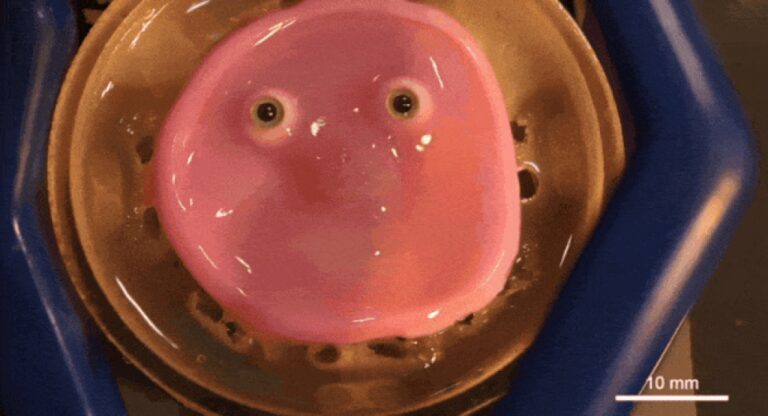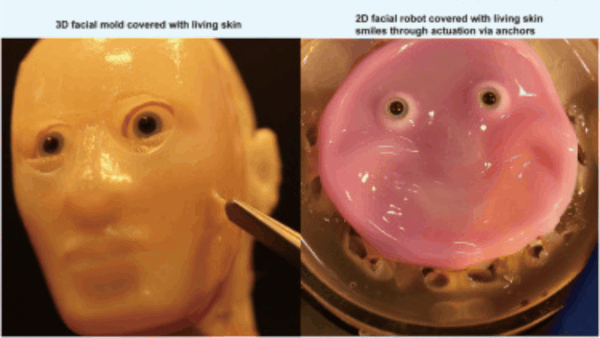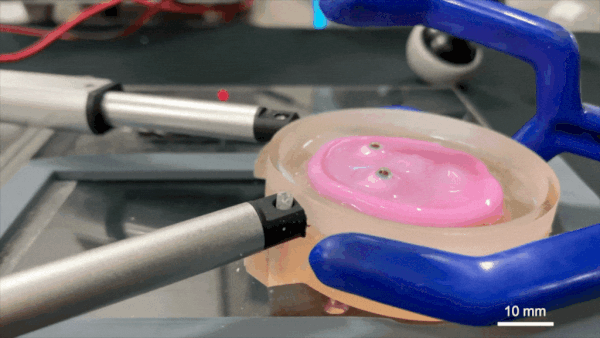
[ad_1]
Takeuchi emphasised the importance of better adhesion between the robotic features and the subcutaneous structure of the skin. By mimicking human skin-ligament structures and using specially made V-shaped perforations in solid materials, the researchers found a way to bind the skin to complex structures. The natural flexibility of the skin and its strong adhesion to the robot ensure that the skin can move without peeling or tearing.
“During previous research on a finger-shaped robot covered in engineered skin tissue we grew in our lab, I felt the need for better adhesion between the robotic features and the subcutaneous structure of the skin,” Takeuchi said in a news release.
“By mimicking human skin-ligament structures and by using specially made V-shaped perforations in solid materials, we found a way to bind the skin to complex structures,” he added.
The researchers created both a 2D model (the pink blob) and a 3D model with a more human-like head shape, the details revealed which were published in the journal Cell Reports Physical Science.

The next challenge is to make the skin thicker and add features like wrinkles to make it more human-like. Takeuchi believes that incorporating sweat glands, sebaceous glands, pores, blood vessels, fat, and nerves can help achieve a thicker and more realistic skin.
“Of course, movement is also a crucial factor, not just the material, so another important challenge is creating humanlike expressions by integrating sophisticated actuators, or muscles, inside the robot,” he said.
These human-like living skin robots have potential applications in medical research, such as drug development, skin ageing studies, cosmetics research, and plastic surgeon training.

Yifan Wang, an assistant professor at Nanyang Technological University, Singapore, finds the research exciting and believes it offers a “hybrid solution” between the soft and traditional robotics fields.
Wang emphasises the importance of skin for sensory perception and believes that using biological skin on traditional robots can help achieve similar sensing capabilities. Takeuchi and his team aim to add more sensory functions in the next research phase to make the skin more responsive to environmental stimuli.
However, ensuring the consistency and quality of the living skin remains a challenge. Takeuchi is exploring the creation of a vascular system for the robotic skin to provide the necessary nutrient supply to maintain the skin’s health over time. While this would require significant engineering work, Wang believes that if successful, it could give humanoids the ability to look and feel like people in the future.
[ad_2]